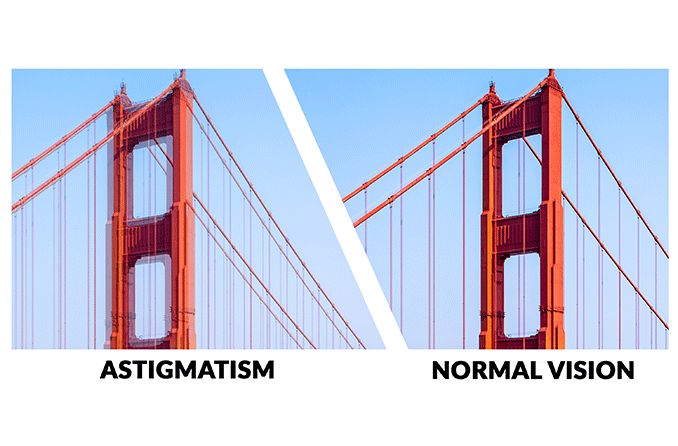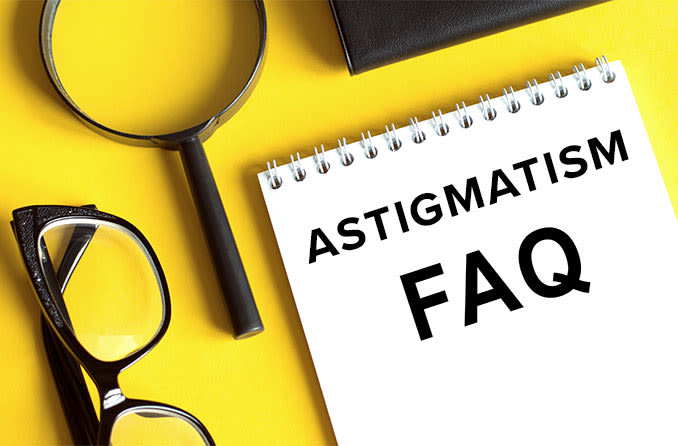
Astigmatism
What does astigmatism look like? Astigmatism is a very common refractive error that causes blurry vision. Learn about what causes it and how corrective lenses can help.

Do eye exercises cure astigmatism? Get the facts about astigmatism eye exercises and find out if they can help you.

Astigmatism is an irregular curve in your eye that can cause blurry vision and other symptoms. Here's how an eye doctor can help you see clearly again.

Astigmatism is caused by a misshapen cornea or lens, which makes it difficult for the eye to focus light. This can cause squinting to focus or reduce glare perceived from light sources.

Astigmatism is easily treatable. Vision can be corrected with eyeglasses, contact lenses or laser surgery like LASIK.

Information for parents about pediatric astigmatism, including causes, symptoms and what it means for your child's vision.

What is astigmatism? Find answers to your questions — from what astigmatism actually is to how to read those confusing lens prescriptions.

Is there an accurate astigmatism test that you can use online or at home? Learn all about astigmatism testing.
All About Vision and AllAboutVision.com are registered trademarks of AAV Media, LLC. © 2000-2025 AAV Media, LLC. The content on this site is for informational purposes only. All About Vision does not provide medical advice, diagnosis or treatment. Contact an eye doctor if you need medical attention.